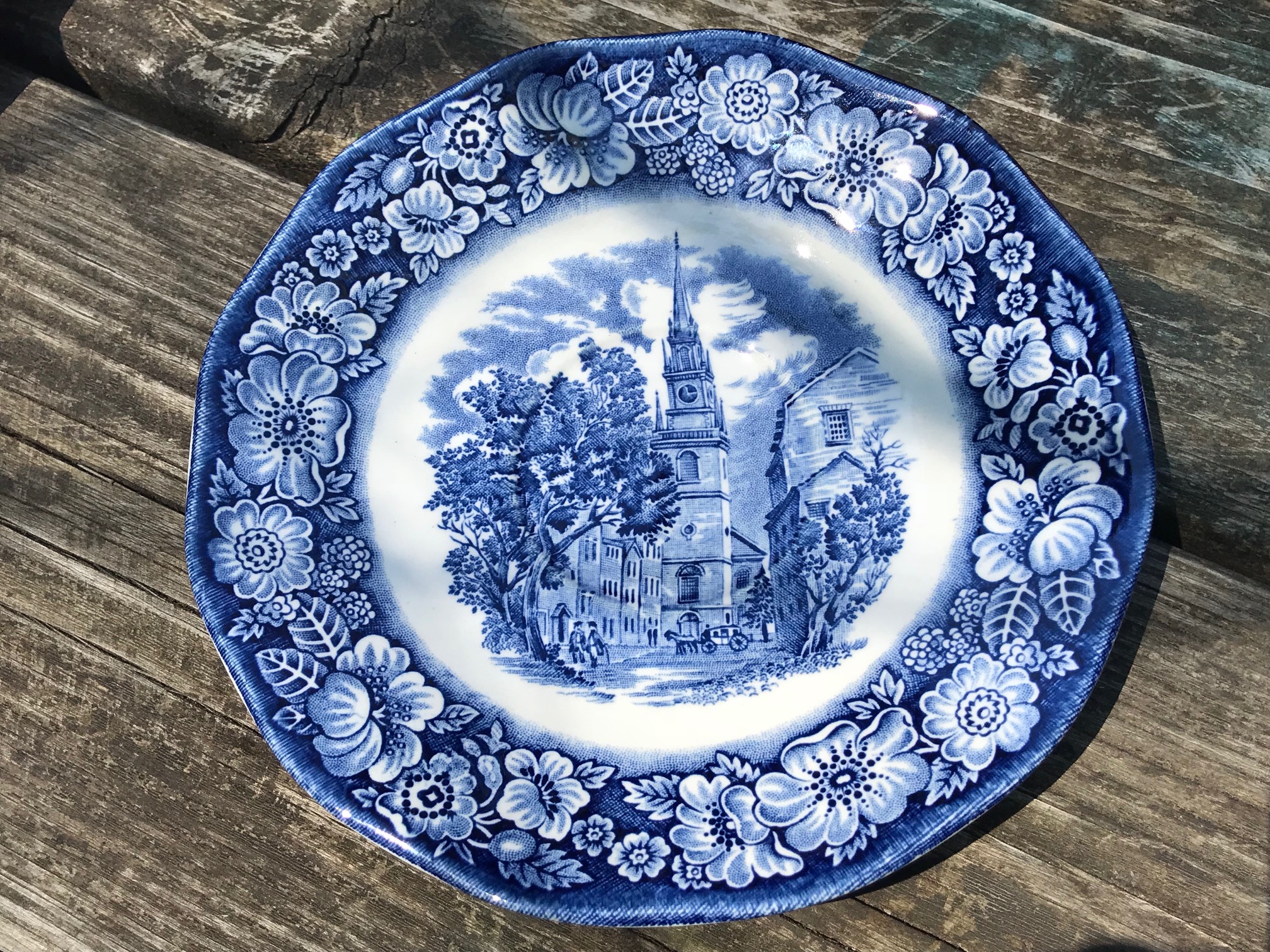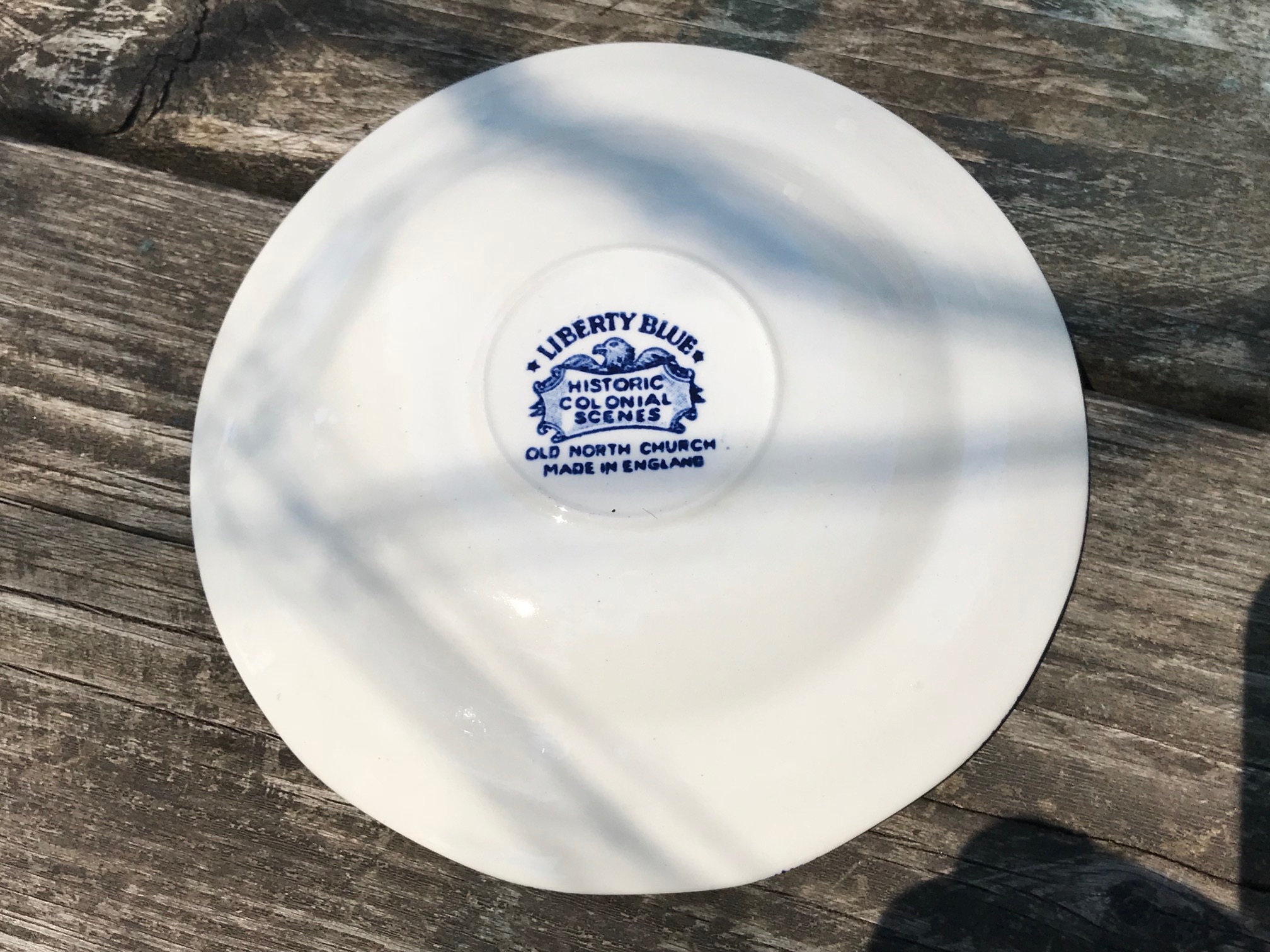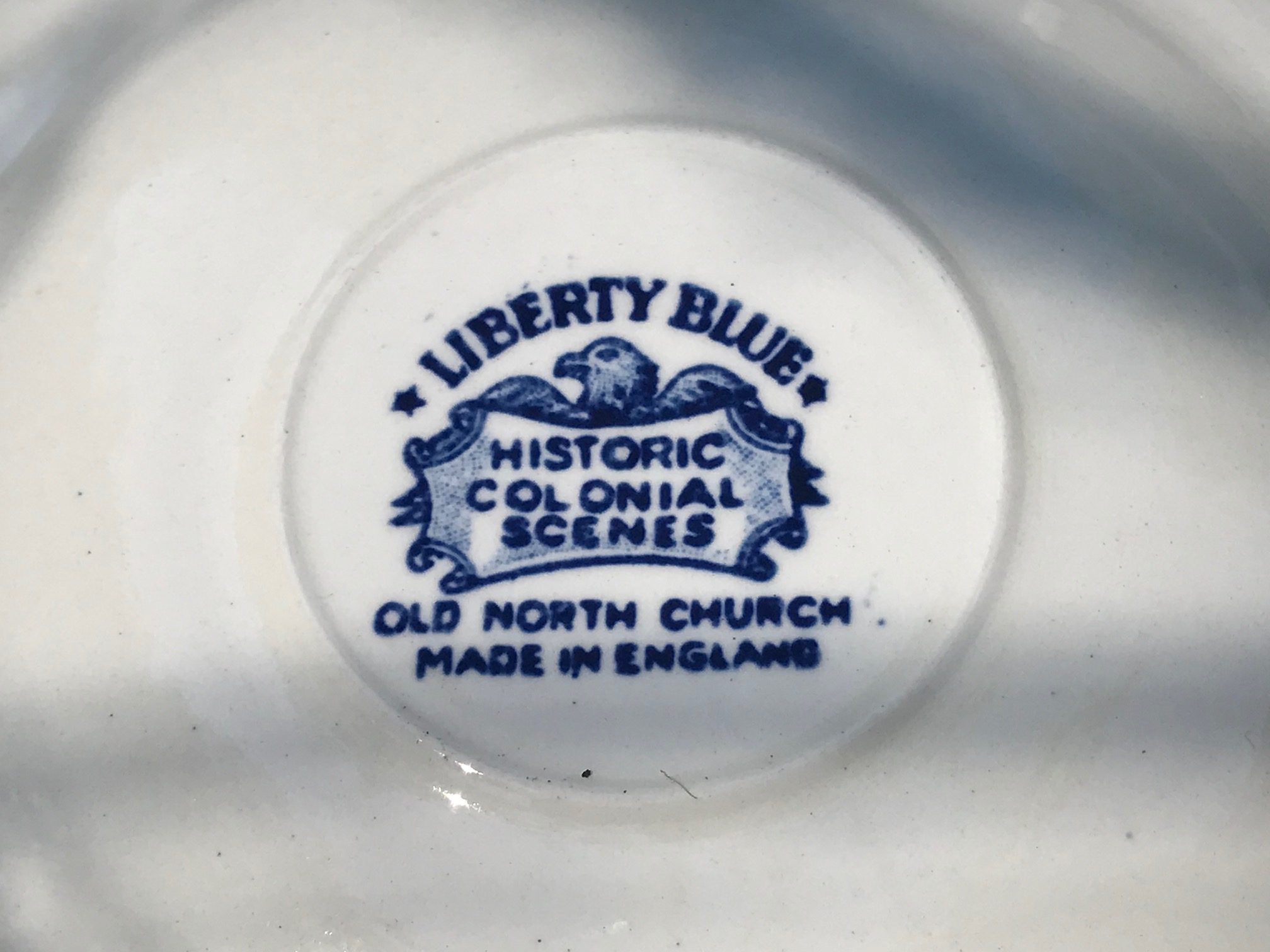English 1976 Liberty Blue saucer with Boston’s Old North Church: 44,100 ppm Lead. This should NOT be used for food!
Published: June 20, 2018
So many families have these dishes! They are truly works of art, and a piece of history (even though they were mass-manufactured only about 40 years ago.) My understanding, from doing a little online research, is that this line with the “Historical Colonial Scenes” was manufactured in 1976 for the United States’ Bicentennial. They were used as collectable promotional pieces for banks and grocery stores, as incentives for customers.
Here’s a link to the Lead-free dishes I use in my home*.
While these Liberty Blue dishes do not always test positive with a LeadCheck Swab — because the swabs were not specifically designed to test dishware (video) — they are ALWAYS in fact very high lead, and I would not use them in my home.
If you plan on keeping one or more pieces of this line, I would ask you to consider creating shadow boxes to display them behind glass so they are not used for food-use purposes and won’t create a risk to future generations (with deterioration possible as a result of daily uses for food purposes.)
When you are creating a shadow box for pieces like this, I also recommend putting a note in the back of the box (out of sight, under the plate) explaining that the piece is high lead and may not be safe to eat off of, so that if someone in a future generation opens the shadow box they will have this information. Read More: To Toss or Not To Toss
When tested with an XRF instrument this Liberty Blue Saucer (depicting the Old North Church in Boston) was positive with the following readings:
- Lead (Pb): 44,100 +/- 1,200 ppm
- Barium (Ba): 250 +/- 80 ppm
- Tin (Sn): 336 +/- 32 ppm
- Zinc (Zn): 882 +/- 71 ppm
- Iron (Fe): 1,245 +/- 198 ppm
- Cobalt (Co): 5,027 +/- 292 ppm
Total lead content in dishware (as readily quantifiable with an XRF) is not regulated in this country [the sole relevant U.S. standard for currently manufactured dishware is a leaching standard – which merely addresses any lead actively leaching from a newly manufactured item at the time of manufacture]. However, as a point of reference, the amount of lead that is considered toxic in the paint or coating of a modern item intended for children is 90 ppm lead and higher (or 100 ppm lead or higher in the substrate.) As this standard is used across the board (for many types of products) by countries with better regulatory practices than the United States, I use the 90 ppm threshold as a standard to determine if an item is lead-safe or not. These dishes are decidedly not lead-safe!
Many of my friends and followers are often seen using the hashtag #KnowBetterDoBetter. It truly applies here. In this case if we KNOW something has high lead content, and there are inexpensive lead-free choices out there, it seems like a very simple choice to make to keep a lead-free home. Trying to detox your home might at first blush seem overwhelming, but I always say that folks should start with their kitchen, and the first thing to look at in their kitchen is the item they use the most – every single day – their dishes.
- To see more vintage dishware I have tested, click here.
- To see my personal choice for lead-free dishes in my home, click here*.
- To read more about the concerns for lead in pottery and dishware, click here.
Thank you for reading!
As always, please let me know if you have any questions.
Tamara Rubin
#LeadSafeMama
*Links on this page may be Amazon affiliate links. If you purchase something after clicking one of these links I may receive a small percentage of what you spend at no extra cost to you.


Never Miss an Important Article Again!
Join our Email List





I recently bought liberty blue China for hanging on my wall. Is it safe just to hang them ? I am not eating out of them.
Thanks
Can you suggest any raised design free dishes that are lead free. I like yours but I prefer smooth surfaces. Thanks so much!